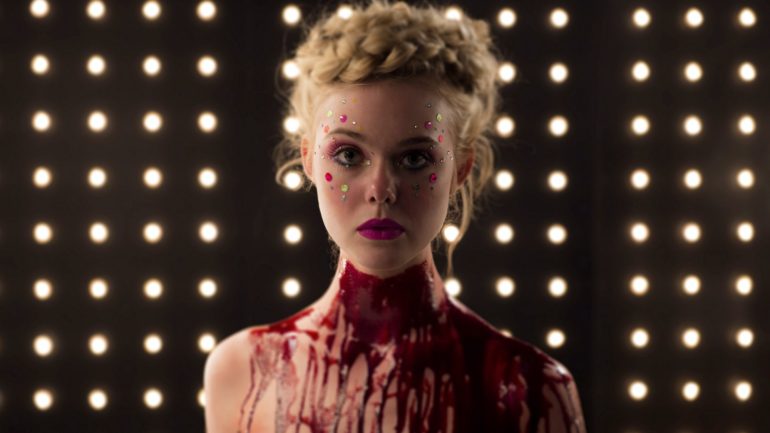A master stylist with an increasingly divisive filmography and pugnacious public persona, Nicolas Winding Refn has at least one cardinal virtue: his is never dull. The director became virtually everybody’s darling with 2001’s Drive, only to weather a peculiarly virulent backlash to its more abstract follow-up Only God Forgives. His latest film The Neon Demon is a lurid, lushly colourful reflection on the cruelty of beauty set in an L.A. fashion world out of David Lynch’s Mulholland Drive. It has doubled down on the controversy, producing an even more circus-like response at Cannes, and prompting one Variety writer to question whether Refn was betraying his talent – others going so far as his sanity.
Has Refn vanished into a haze of formal pretension and self-indulgence as his critics allege? We enter the world of Neon Demon cold: Jesse (Elle Fanning) is a 16 year-old waif fresh in L.A. from a mysterious past. She believes that beauty is her only commodity and sets her sights on modelling; meanwhile she lives in a dilapidated motel run by shady sleazoid Hank (Keanu Reeves playing epically against type). Whatever ‘it’ is, Jesse turns out to have it in spades: photographers and designers are mesmerized by her fresh, unaffected beauty, and her ascent as a model seems unstoppable.
As the film progresses, we observe the effect of Jesse’s beauty on different characters. She herself gradually becomes seduced and transformed by its power; make-up artist Ruby (Jenny Malone) is friendly and protective for ultimately amorous reasons; jaded older models Gigi and Sarah are predictably resentful. So much for the plot of The Neon Demon. Built around this slender wisp of storyline, Refn’s film is experiential rather than narrative-based; it is a creature of mood, tone, imagery and meticulous composition, not story and well-developed characterisation. Your mileage will vary accordingly.
Thematically, The Neon Demon has been called a satire/critique of the dehumanizing effects of the fashion industry and a general cultural preoccupation with beauty, surface appearance and narcissism. This is true only to an extent. Far more interestingly, The Neon Demon fully evokes (even revels in) the demonic power of everything it also critiques. Many film-makers have explored the fashion industry in the past, but few have embraced the gaudy, hyper-stylized artificiality of fashion aesthetics as fully as Refn does here.
As a director increasingly accused of prioritizing surface sheen and image over substance and content, Refn’s film is as much about the irrational seductiveness of beauty, narcissism and designer artifice as it is a scarcely needed reminder that these things are not entirely good for the soul. When a photographer prepares a nude Jesse for a shoot with gold paint in a closed set, the scene manages to be both intensely creepy and suggestive of an artist’s rapture in finding a new subject or muse. It’s hard not to see Refn here, in his dual role as artist and fetishist, fatally implicated in the gloss of the images he’s supposedly critiquing.
Ever a cinephile’s director, part of the pleasure of Refn’s films lies in unravelling the jigsaw of underlying influences. This time around, the lustrous primary colours of Italian horror maestros Mario Bava and Dario Argento provide an obvious precursor to the film’s look. Overall, though, The Neon Demon is more reminiscent of the work of Jean Rollin, a French director of the 70s whose films similarly blur the line between exploitation and art cinema, and explore themes of sex, death and the shifting balance of power in obsessive relationships. I suspect the chief influence may be Robert Altman’s 3 Women (1977), another Californian tale of an innocent, slightly eerie small town girl whose identity begins to merge into that of the women around her.
The Neon Demon is likely to harden rather than change people’s existing opinions about Refn, and about highly stylized cinema in general. Though wildly unsubtle when it wants to be, it hasn’t got enough credit for the actually quite subtle fashion that it builds an air of unease in every scene. It is a horror film without a distinctly defined threat or antagonist. Instead, like 3 Women it creates a small, self-contained world which is suffused with an air of sinister mystery. We don’t know where we stand in this world: Jesse seems like an embodiment of innocence when she arrives in LA, but even with her there is something we don’t know, some ill-defined threat of violence under the surface. What happened to her parents? Why did her mother tell her she was dangerous?

